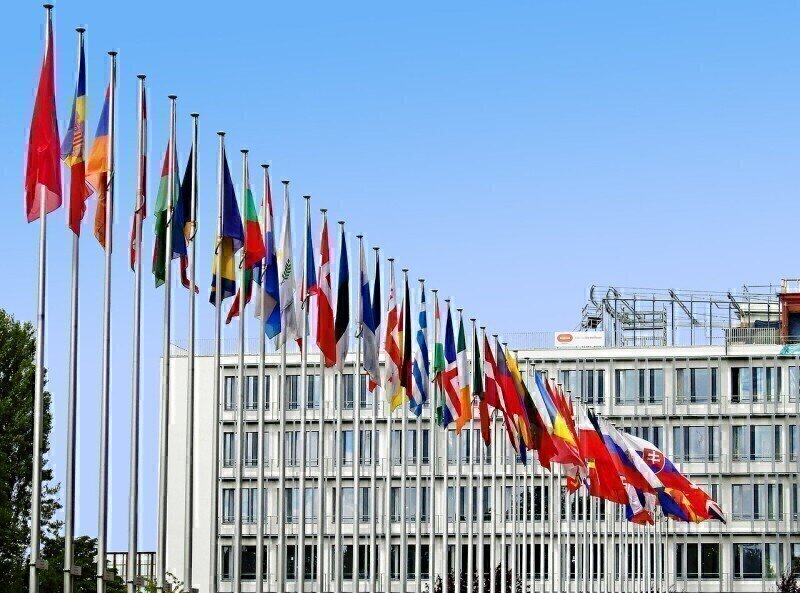How Many EU States Are on Track for Air Pollution Targets?

Researchers at the University of Birmingham and University of Oxford have secured £207,000 funding from the Natural Environment Research Council to investigate the impacts of COVID-19 related public health measures upon air and noise quality in Oxford.
The new ‘OxAria’ study started on 1st July, extending an existing collaboration which has enabled five low-cost air pollution sensors to be installed at city centre locations, generating real-time information on key air pollutants, including Nitrogen Oxides (NO, NO2), Carbon Monoxide (CO), Ozone (O3) and Particulate Matter (PM1, PM2.5, PM10); known to be a risk to human health.
Over the next 18-months joint lead researchers Dr Suzanne Bartington (Institute of Applied Health Research, University of Birmingham) and Dr Felix Leach (Department of Engineering Science, University of Oxford) will work in partnership with Oxfordshire County Council and Oxford City Council to extend the existing air quality sensor network to 16 city locations, taking a measurement every ten seconds. Acoustic monitoring devices will be deployed alongside the air quality sensor network to capture audio frequency (noise levels). The air and noise pollution data alongside traffic information obtained from roadside detection sensors will be used to better understand the relative contribution of traffic to overall pollution and to identify distribution of localised environmental pollution hotspots.
Oxford City Council has recognised challenges of poor air quality and the authorities are currently working to reduce harmful NO2- which is currently breaching the annual mean legal limit in some areas of the city. A recent report commissioned by Oxford City Council and undertaken by Ricardo Energy & Environment identified the transport sector to be the largest contributor of NO2 emissions in the city, accounting for 68% emissions. Reduction in traffic levels of up to 60% in Oxford during the COVID-19 lockdown period led to a decrease in NOx concentrations as measured at the regulatory air quality monitoring stations; although changes in Particulate Matter concentrations were less marked and even increased at times; a pattern also observed in other UK cities. By using data obtained from before, during and after the COVID-19 restrictions at multiple sites, the study team will be able to better understand the impact of public health measures upon specific pollutant levels, and therefore develop the evidence base for future policy actions.
The data will help inform Oxford City Council’s new Air Quality Action Plan (AQAP) to be published later this year, outlining the air quality targets and measures to be achieved between 2021-2025. The information will also be used to predict the future positive and negative health benefits of air quality control scenarios, such as the Connecting Oxford proposals (comprising three bus gates, a Workplace Parking Levy and sustainable travel improvements) and Zero Emission and Low Emission Zone restrictions, now planned for introduction from late 2021.
Principal Investigator Dr Suzanne Bartington from the Institute of Applied Health Research, University of Birmingham said: “poor air quality is the greatest environmental risk to human health in the UK responsible with approximately 5.6% of all mortality attributable to long-term exposure to fine particulate matter (PM2.5). The COVID-19 pandemic provides a unique natural experimental opportunity to understand the positive and negative impacts arising from recent changes in the way people move around the city, thereby redefining local air quality policy and climate strategy”
Co-Principal Investigator Dr Felix Leach Associate Professor of Engineering Science at the Department of Engineering Science, University of Oxford said: “Air pollution is a complex mixture of substances, and understanding the effect of interventions on all of these together on a local level is important. Oxford will become probably the most-monitored city for air quality in the UK. In this collaboration between emissions, public health, and local authority experts, we will provide an evidence based approach for air quality improvement into the future.”
Councillor Tom Hayes, Deputy Leader and Cabinet Member for Green Transport and Zero Carbon Oxford, Oxford City Council, said: “We welcome this new research by the Universities of Oxford and Birmingham into air quality. This study will help us to learn more about the impacts of air pollution before, during, and after lockdown, so that we can continue to develop an evidence-led plan for our Zero Emission Zone and Connecting Oxford proposals, as well as the city’s own Air Quality Action Plan. I am looking forward to seeing the results of this research, so that we can continue to learn as we tackle toxic air pollution in our city”
Councillor Yvonne Constance, Oxfordshire County Council Cabinet member for Environment said: “This a very good example of the wider ambition and a series of projects Oxfordshire County Council is committed to support in transport management, energy efficiency and connectivity to achieve zero emissions by 2030 in our own estate and succeed ahead of the Government target of net zero by 2050. The sensors will play an important part in helping us to understand pollution hotspots in Oxford and will help inform our approach as we plan for steps to address this including in our Zero EmisThe European Commission has published its first report on how member states are progressing towards achieving their objectives as laid out in the National Emissions reduction Commitments (NEC) Directive – and the results don’t make for encouraging reading. Over half of the 27 countries are unlikely to meet their 2020 goals, while more than 80% will miss out on their 2030 aims if they do not improve their practices soon.
The report is based upon projections made by each individual country over the amount of emissions they expect to produce in 2020. The authors of the report concede that their analysis is far from conclusive – especially given that several countries missed the deadline for submitting their projections, while others have only submitted a draft document or, in two cases, no documents at all. However, it still points to the long road ahead for EU states to clean up their act and achieve the lofty ambitions laid out in the Clean Air Programme.
What is the NEC Directive?
First launched on December 31st 2016, the NEC Directive is the EC’s main legislative tool in enforcing the objectives defined by the Clean Air Programme. Among other goals, the EC has targeted a 50% decrease in the negative health impacts of poor air quality by 2030 across all member states, with concurrent benefits for the environment.
In particular, the NEC Directive governs emissions for five different pollutants. These are ammonia (NH3), fine particulate matter (PM2.5), nitrogen oxides (NOx), non-methane volatile organic compounds (NMVOCs) and sulphur dioxide (SO2). The targets delineated for the years 2020 to 2029 are already clearly defined, with even more ambitious targets set to follow from 2030 onwards.
Disappointing results
Frequent monitoring of the air quality found in cities and further afield is crucial to assessing how well EU member states are progressing towards the Clean Air Programme goals – and the first report does not make for encouraging reading. A mere 10 (37%) of the 27 nations are on track to achieve their 2020 goals according to current practices, sparking concern that not enough is being done in over half of the bloc.
Meanwhile, the 2030 targets now appear to be even more unattainable. According to the EC’s report, just four EU states are in line to achieve their goals. Croatia, Cyprus, the Netherlands and Finland have put in place a blueprint for success that other nations should be encouraged to follow, but the fact that the other 23 are not close to adhering to their targets should set alarm bells ringing.
Instigating change
The current upheaval caused by coronavirus – and the environmental impact of the pandemic – have brought the topic of air quality into sharp focus. With much of the continent having experienced some form of quarantine over the last three months, air pollution had fallen dramatically in many EU countries. However, levels of NO2 and other pollutants are beginning to creep up now that restrictions are being relaxed.
With the world at something of a crossroads, it’s high time that governments across Europe and beyond used the present predicament to instigate real change. First on the list for EU countries should be curbing the widespread use of ammonia in fertilisers and pesticides, which continued unabated during the COVID-19 crisis and which is one of the most common and most damaging contributors to air pollution and climate change, according to the EC.sion Zone planned to start in 2021 which will be expanded across the city in stages.”


 Researchers at the University of Birmingham and University of Oxford have secured £207,000 funding from the Natural Environment Research Council to investigate the impacts of COVID-19 related public health measures upon air and noise quality in Oxford.
Researchers at the University of Birmingham and University of Oxford have secured £207,000 funding from the Natural Environment Research Council to investigate the impacts of COVID-19 related public health measures upon air and noise quality in Oxford.